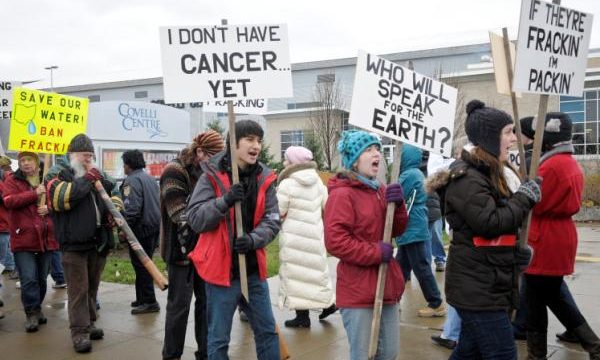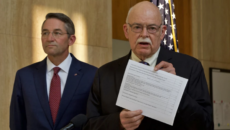Shocker: EPA Quietly Withdraws Study Linking Fracking To Groundwater Contamination

Last year an EPA study of groundwater in Pavilion, Wyoming, made national news as the “first link” between fracking and groundwater contamination. That was big news for the anti-fracking activists who touted the study endlessly as proof that the gas/oil drilling technique is dangerous and “poisons” groundwater.
But there were problems with the EPA’s study almost from the get-go, including allegations that the EPA had introduced many of the contaminants they subsequently detected themselves while drilling test wells.
The complaints prompted a review of the study by the EPA and the USGS, and now nearly a year later the EPA is withdrawing the study entirely. Note, the EPA isn’t apologizing for misleading the public and poisoning what is a very legitimate debate over the safety of fracking as a drilling technique. They’re just dropping the study:
For starters, the EPA’s study was released in preliminary form, and it was never peer-reviewed. In fact, the EPA went out of its way to ensure that Wyoming’s governor and state agencies didn’t have a chance to look it over before it became publicly available. And when the study was released, the Wyoming Department of Environmental Quality and the Wyoming Bureau of Land Management both expressed significant concerns about the EPA’s conclusions.
Had professional scientists had a chance to review the EPA’s preliminary study before it hit the headlines, they doubtless would have complained that only four samples were examined — not nearly enough to be scientifically definitive.
Also, the EPA had failed to find contamination in the existing water sources in Pavillion, so it drilled its own wells — but went far deeper into the earth, into natural hydrocarbon-bearing foundations. As Encana, the developer, wrote at the time, “Natural gas developers didn’t put the natural gas at the bottom of the EPA’s deep monitoring wells, nature did.” So when the test results showed hydrocarbons, that said nothing about fracking and much about the EPA’s scientific sloppiness.
Furthermore, the methods and materials used to drill the EPA’s sample wells may well have introduced chemical contaminates.
And different labs reached contradictory conclusions about the small samples the EPA collected. One lab even reported that the “blank” sample used solely for comparison purposes was tainted.
But the details of how recklessly the EPA conducted its study were omitted in many of the sensational reports that followed the draft report’s release.
And the few journalistic accounts that acknowledged the study’s problems were dismayed about the implications of its very public debut. Wyoming’s Casper Tribune wrote in an editorial: “You think Pavillion water is a mess? Try setting the record straight if the EPA’s report is eventually changed or discredited after scientific review. . . . The EPA may have poisoned the public debate by releasing its [preliminary] report.”
That assessment is proving prophetic. EPA reps said this week that although the agency “stands behind its work and data,” the study won’t be finalized, and the Obama administration won’t rest on the report’s conclusions. That’s a nice talking point, but if the Pavillion study could actually stand up to scrutiny, you can bet the EPA would be using it to act — and to act boldly.
In short, the EPA prioritized politics over sound research and data, and when they got caught they decided to just pretend like the whole thing didn’t happen.







